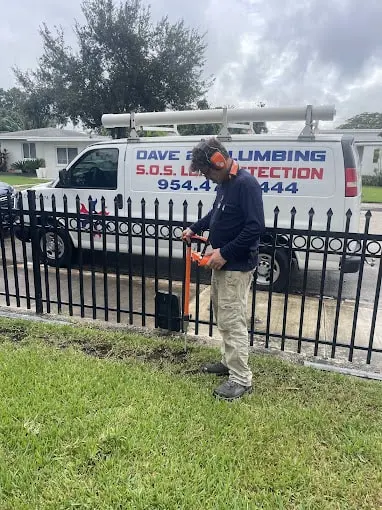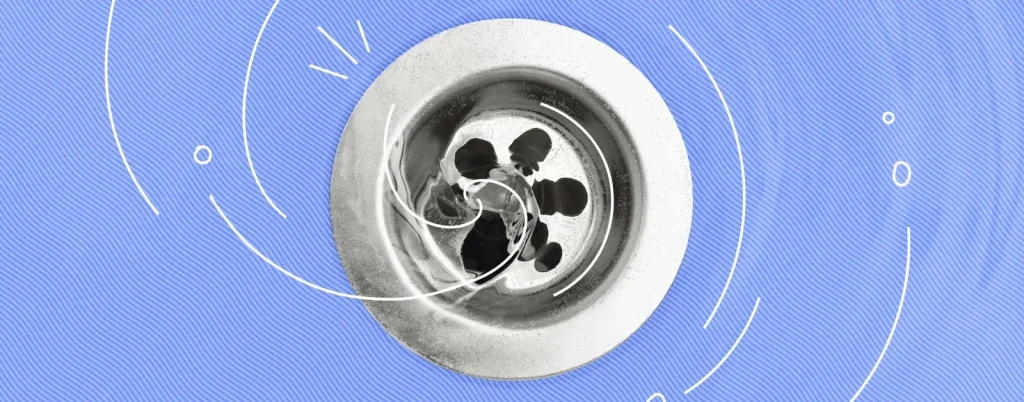Nobody likes a surprise cold shower. It’s a sure sign your appliance is failing. Here at Dave21 Plumbing, we see this all the time. We make the whole process simple for you. A proper hot water heater replacement ensures you get back to comfortable showers quickly. Let’s talk about how you know it’s time for a new one.

Signs Your Shower Drain is Clogged
How do you know if there’s a problem with water flow? The most obvious sign of a shower drain clogged is slow draining – water pools around your feet and takes forever to go down. You might also notice gurgling sounds as water struggles to pass through. Sometimes there’s an unpleasant smell coming from the pipes, which happens when debris gets stuck and starts to decay.
Another telltale sign is water backing up in other bathroom fixtures when you use them. This suggests a blockage deeper in your plumbing system that needs attention before it gets worse.
Common Causes of Shower Drain Clogs
Most bathroom blockages come from the same culprits. Hair is the biggest offender, especially in households with people who have long hair. When you have a shower drain clogged situation, it’s often because soap scum builds up over time and creates a sticky surface that catches everything else. Hard water minerals can accumulate and narrow your pipes too.
Product buildup is another common cause. Thick conditioners, bath oils, and body washes don’t always dissolve completely and can form gunky deposits inside your pipes over time.
How to Remove Hair from Your Drain
Getting rid of hair blockages that cause a shower drain clogged problem is usually pretty simple. First, remove the cover plate (you might need a screwdriver). Then grab a flashlight to see what you’re dealing with. Often, you can reach in with your fingers or tweezers to pull out the clog.
For deeper hair problems, try a zip-it tool – it’s a long plastic strip with barbs that catch hair when you insert it and pull it back out. They cost just a few dollars at hardware stores and work amazingly well!
Before calling a plumber for your shower drain clogged issue, try these simple home remedies:
- Boiling water – Pour it directly down the opening to melt soap scum
- Wire hanger – Straighten it out with a hook at the end to fish out debris
- Wet/dry vacuum – Create suction to pull out the blockage
- Commercial cleaners – Follow package directions carefully
- Baking soda and vinegar – See below for instructions
These methods solve most common blockages without harsh chemicals or expensive service calls.
A plunger isn’t just for toilets! For your bathroom floor with a shower drain clogged problem, use a cup-style plunger (not a flange type). Add petroleum jelly around the rim for a better seal. Cover the overflow outlet with a wet cloth, then place the plunger over the opening.
Push down and pull up rapidly several times, creating pressure that can dislodge the blockage. After plunging, run hot water to see if it flows freely.
This natural remedy works well for a mildly shower drain clogged with soap and hair. Pour half a cup of baking soda down the opening, followed by half a cup of white vinegar. The mixture will bubble and fizz – that’s the cleaning action working!
Cover with a plug for about 30 minutes, then flush with hot water. This combo helps break down soap scum, hair, and other organic matter without harsh chemicals.
For tougher shower drain clogged situations, a snake (also called an auger) is your best friend. Feed the snake into the opening until you feel resistance. Then rotate the handle clockwise, which helps the tip break through or grab the blockage.
Keep pushing and turning until the water starts flowing again. Pull the snake out slowly, cleaning off any debris as you go. Snakes come in different lengths – a 25-foot one handles most household jobs perfectly.
Prevention is always easier than fixing a shower drain clogged with hair and gunk! Install a hair catcher over your opening – they’re inexpensive and catch hair before it goes down. Clean it regularly to maintain good flow.
Run hot water after every shower to wash away soap and prevent buildup. Once a month, pour baking soda and vinegar down followed by hot water as maintenance. This keeps things flowing smoothly without waiting for problems to develop.
Sometimes a blockage is too severe for DIY methods. If you’ve tried multiple solutions with no improvement, it’s time for professional help. Call a plumber if water backs up in multiple fixtures, suggesting a main line issue.
Other signs include recurring blockages despite cleaning, sewage smells, or unusual noises in your plumbing system. A professional has specialized tools to handle deep blockages without damaging your pipes. They can also spot potential problems before they become major repairs!
Trustindex verifies that the original source of the review is Google. These guys are the best. It was extremely easy -went to the website afterhours and posted a chat message. Sam called me right away and we scheduled for two days later to replace two toilets. They gave the option of picking up the products and removing the old toilets. They got here in time, worked quietly, cleaned up spotlessly, and everything was done in 90 minutes. 10 out of 10. Highly recommend. Update: reached out via the chat tool and Sam responded pretty promptly - service was professional and timely and reasonable - can't ask for better servicePosted onTrustindex verifies that the original source of the review is Google. Sam so profesional could resolve problem asapPosted onTrustindex verifies that the original source of the review is Google. I'm very satisfied for the work has been done here, especially a very professional job. highly recommended for detecting problems, locating pipe underground and fix issue! you can save a lot of money!Posted onTrustindex verifies that the original source of the review is Google. Thank you for your service, the tech you send Sam was wonderful, he fixed my leak under the kitchen sink really quickly and efficiently. Price was good! recommend 100%Posted onTrustindex verifies that the original source of the review is Google. Asam was amazing. He called every few hours to update me on his arrival time. He was very neat and left the area spotless. Only reason I didn't give 5 stars was whoever passed the job to Asam was a bad communicator. I was chasing him for answers.Posted onTrustindex verifies that the original source of the review is Google. Good job donePosted onTrustindex verifies that the original source of the review is Google. Cleared the main drain from the roof. Good job.Verified by TrustindexTrustindex verified badge is the Universal Symbol of Trust. Only the greatest companies can get the verified badge who has a review score above 4.5, based on customer reviews over the past 12 months. Read more
FAQs
Are chemical drain cleaners safe to use on my pipes?
Chemical cleaners can damage older pipes, especially PVC. They’re harsh on your plumbing system and the environment. While they might work for minor clogs, repeated use weakens pipes over time. For regular maintenance, stick with baking soda and vinegar solutions. If you must use chemicals, follow directions exactly and use protective gear.
How often should I clean my shower drain to prevent clogs?
For preventative maintenance, clean your shower drain monthly. Remove and clean your hair catcher weekly if you have long hair in your household. After every shower, run hot water for 30 seconds to flush away soap residue. A monthly baking soda/vinegar treatment keeps things flowing smoothly without waiting for a full blockage.
What's the average cost to have a plumber unclog a shower drain?
Professional plumber costs for unclogging a shower drain typically range from $100-$275, depending on your location, time of day, and clog severity. Emergency services cost more. Some plumbers charge flat rates, while others bill hourly plus materials. Always ask for a quote before work begins to avoid surprises.
Can I use the same methods for a bathtub drain clog?
Yes! These methods work equally well for bathtub drains. The main difference is that tubs often have different drain covers and mechanisms. Some tubs have trip levers controlling the stopper, which may need removal first. Otherwise, the plunging, snaking, and baking soda/vinegar solutions work the same way.

